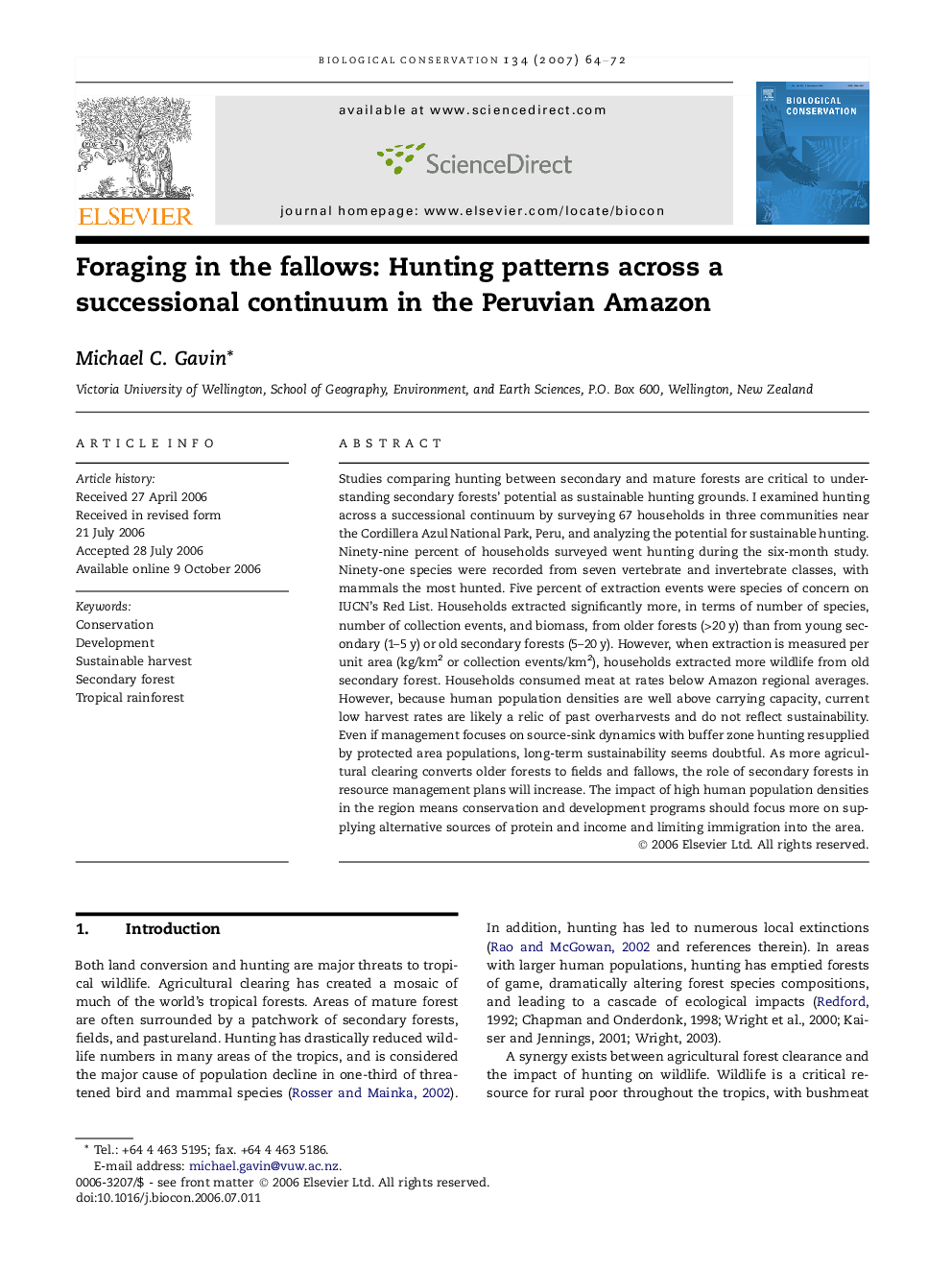| کد مقاله | کد نشریه | سال انتشار | مقاله انگلیسی | نسخه تمام متن |
|---|---|---|---|---|
| 4387319 | 1304599 | 2007 | 9 صفحه PDF | دانلود رایگان |

Studies comparing hunting between secondary and mature forests are critical to understanding secondary forests’ potential as sustainable hunting grounds. I examined hunting across a successional continuum by surveying 67 households in three communities near the Cordillera Azul National Park, Peru, and analyzing the potential for sustainable hunting. Ninety-nine percent of households surveyed went hunting during the six-month study. Ninety-one species were recorded from seven vertebrate and invertebrate classes, with mammals the most hunted. Five percent of extraction events were species of concern on IUCN’s Red List. Households extracted significantly more, in terms of number of species, number of collection events, and biomass, from older forests (>20 y) than from young secondary (1–5 y) or old secondary forests (5–20 y). However, when extraction is measured per unit area (kg/km2 or collection events/km2), households extracted more wildlife from old secondary forest. Households consumed meat at rates below Amazon regional averages. However, because human population densities are well above carrying capacity, current low harvest rates are likely a relic of past overharvests and do not reflect sustainability. Even if management focuses on source-sink dynamics with buffer zone hunting resupplied by protected area populations, long-term sustainability seems doubtful. As more agricultural clearing converts older forests to fields and fallows, the role of secondary forests in resource management plans will increase. The impact of high human population densities in the region means conservation and development programs should focus more on supplying alternative sources of protein and income and limiting immigration into the area.
Journal: Biological Conservation - Volume 134, Issue 1, January 2007, Pages 64–72